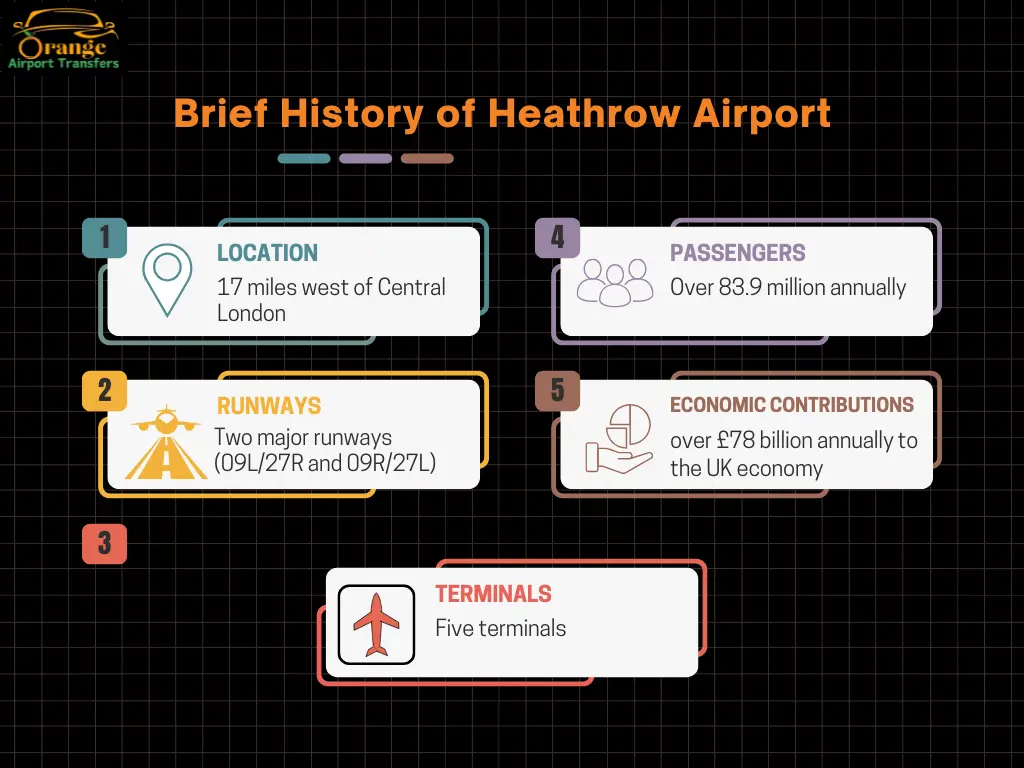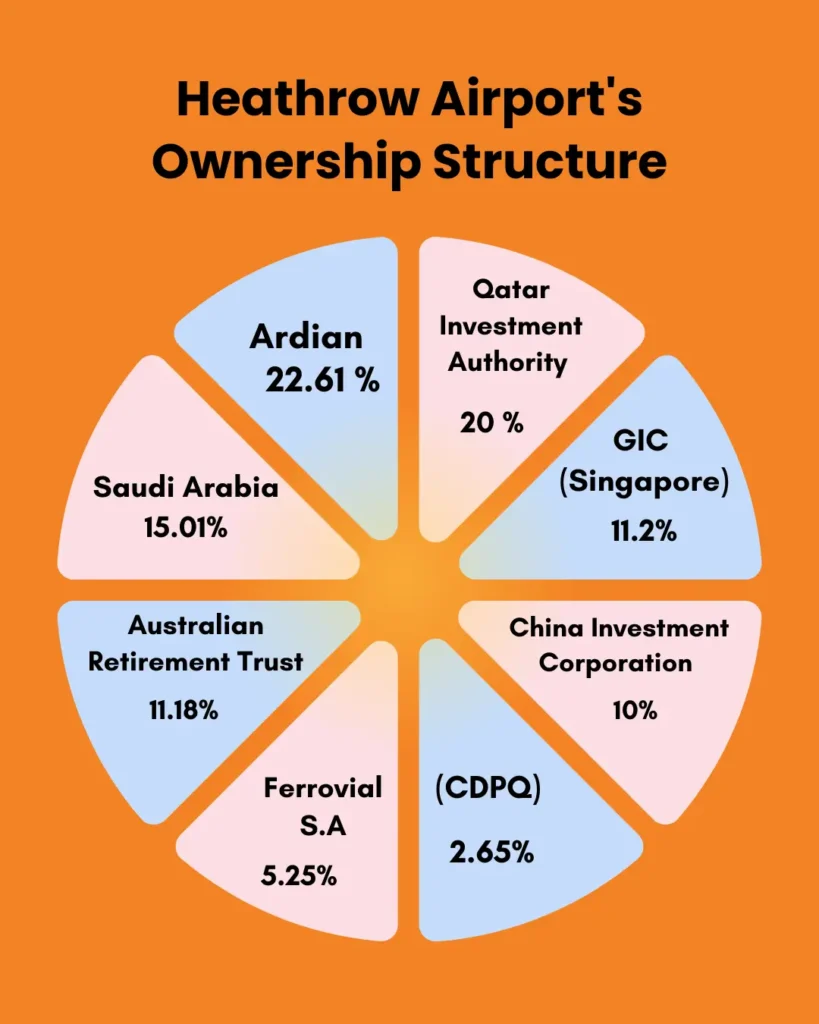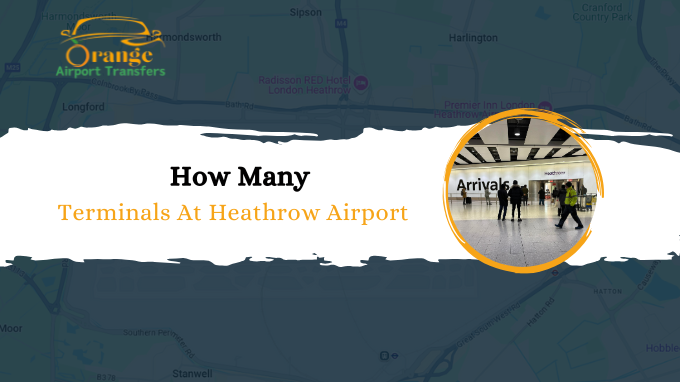London Heathrow Airport, the UK’s busiest aviation hub and one of the world’s most iconic airports, is a critical gateway for millions of travelers each year. Whether you’re jetting off for a holiday, a business trip, or visiting family, understanding the ownership and operations of this global transportation powerhouse can provide valuable context for your travel experience.
At Orange Airport Transfer, we pride ourselves on offering reliable and comfortable taxi services to and from Heathrow, ensuring your journey starts and ends smoothly. In this article, we explore who owns Heathrow Airport, its history, and how its ownership structure impacts travelers like you.
A Brief History of Heathrow Airport

Location: 17 miles west of Central London
Passengers: Over 83.9 million annually
Runways: Two major runways (09L/27R and 09R/27L)
Terminals: Five terminals, serving hundreds of international destinations
Economic Importance: Contributes over £78 billion annually to the UK economy
Heathrow’s story began in 1929 as a small airfield known as the Great West Aerodrome, established by British aero engineer Richard Fairey. Initially used for aircraft assembly and testing, it was transformed during World War II when the UK government requisitioned the land to develop RAF Heston. By 1946, with the war over, the site was repurposed as a civil airport, officially opening as London Airport on March 25, 1946. It was renamed Heathrow Airport in 1966, reflecting the hamlet of Heath Row that once stood on its grounds.
Today, Heathrow is Europe’s busiest airport, handling over 84 million passengers from March 2024 to February 2025, and serves as a primary hub for airlines like British Airways and Virgin Atlantic. Its two runways and four operational terminals make it a cornerstone of global aviation.
The Company Behind Heathrow Airport
The owner and operator of London Heathrow Airport is Heathrow Airport Holdings Ltd. (formerly known as BAA – British Airports Authority). Heathrow Airport Holdings is responsible for the day-to-day operations, infrastructure development, safety, and expansion planning.
However, Heathrow Airport Holdings itself is owned by a consortium of international investors, which brings us to the core of the topic.
Heathrow Airport’s Ownership Structure

Heathrow Airport is owned and operated by Heathrow Airport Holdings Limited, formerly known as the British Airports Authority (BAA). This company is responsible for managing the airport’s operations, including facility maintenance, baggage handling, air traffic control, and passenger services. However, the ownership structure of Heathrow Airport Holdings is more complex, as it is controlled by FGP Topco Limited, a consortium of international investors. Here’s a breakdown of the key shareholders as of December 2024:
- Ardian (22.61%): A French private equity firm and the largest shareholder, Ardian acquired a significant stake in 2024, building on its experience in European airport investments, including a prior stake in London Luton Airport.
- Qatar Investment Authority (20.00%): Qatar’s sovereign wealth fund holds a substantial share, reflecting its global investment strategy in infrastructure.
- Public Investment Fund (Saudi Arabia) (15.01%): Saudi Arabia’s wealth fund acquired a 15% stake in 2024, marking a significant entry into the UK’s aviation sector.
- GIC (Singapore) (11.20%): Singapore’s sovereign wealth fund is another major player in Heathrow’s ownership.
- Australian Retirement Trust (11.18%): This Australian pension fund holds a notable stake, emphasizing long-term infrastructure investments.
- China Investment Corporation (10.00%): China’s sovereign wealth fund adds to the diverse international ownership.
- Ferrovial S.A. (5.25%): Once the majority owner, this Spanish infrastructure giant reduced its stake significantly in 2024, selling portions to Ardian and the Public Investment Fund.
- Caisse de dépôt et placement du Québec (CDPQ) (2.65%) and Universities Superannuation Scheme (USS) (2.10%): These smaller stakeholders round out the consortium.
This diverse ownership reflects Heathrow’s status as a global asset, attracting investment from sovereign wealth funds and private equity firms worldwide.
Who Regulates Heathrow Airport?
Though it is privately owned, Heathrow is regulated by the UK Civil Aviation Authority (CAA), which ensures:
- Fair pricing for airlines
- Passenger safety and service quality
- Transparent airport operations
- Sustainable environmental practices
The UK government also plays a role in setting strategic directions, especially with major projects like the proposed third runway expansion.
The Evolution of Ownership: From Public to Private
Heathrow’s ownership journey began with its establishment under the Ministry of Aviation in 1946. In 1965, the British Airports Authority (BAA) was created to manage Heathrow and other UK airports, including Gatwick, Stansted, and Prestwick. The pivotal moment came in 1986 when BAA was privatized under Prime Minister Margaret Thatcher’s government, becoming BAA plc. This move marked a shift from state ownership to a commercial enterprise.
In 2006, a consortium led by Ferrovial acquired BAA for £10.6 billion, a deal heavily financed by debt. This acquisition sparked controversy due to concerns over foreign ownership and financial engineering. Over time, regulatory pressures from the UK’s Competition Commission forced BAA to sell off Gatwick, Stansted, and Edinburgh airports, leading to a rebrand as Heathrow Airport Holdings Limited in 2012, focusing solely on Heathrow.
The 2024 sale of Ferrovial’s remaining stake to Ardian and Saudi Arabia’s Public Investment Fund for a combined $4.12 billion marked a significant shift, further diversifying ownership and reducing Ferrovial’s influence. This transaction highlighted Heathrow’s attractiveness as a long-term investment, despite challenges like high debt and regulatory constraints on landing fees.
How Ownership Impacts Travelers
Heathrow’s ownership structure influences its operations, which directly affect passengers. The consortium’s focus on profitability has led to high landing fees and passenger charges, often passed on to travelers through ticket prices. For instance, the Civil Aviation Authority (CAA) regulates these charges, setting them at £25.43 per passenger for 2024–2026, down from £31.47 in 2023, sparking debates between airlines and the airport over investment and service quality.
For travelers, this translates to costs like drop-off fees and parking charges, which have risen post-pandemic. However, investments in infrastructure, such as the redevelopment of Terminal 2 and plans for a third runway, aim to enhance capacity and passenger experience. At Orange Airport Transfer, we understand the importance of seamless travel. Our Heathorow Airport taxi services provide a cost-effective and stress-free alternative to navigating Heathrow’s parking and drop-off systems, ensuring you arrive at your terminal on time.
Your Connection to Heathrow – Orange Airport Transfer
Whether you’re a frequent flyer or planning a holiday, getting to and from Heathrow should be the least of your worries. That’s where Orange Airport Transfer steps in.
As a leading taxi service to Heathrow Airport, we provide:
- 24/7 availability
- Fixed and transparent pricing
- Professional drivers
- Fleet options for individuals, families, and business travellers
Whether you’re travelling from London or any surrounding area, Orange Airport Transfer ensures your Heathrow journey begins and ends comfortably.
Final Thoughts:
Heathrow’s ownership is likely to remain a topic of interest as global investors continue to see its value. The airport’s strategic importance, coupled with its challenges such as capacity constraints and environmental concerns will shape future investment decisions. The proposed third runway, backed by the UK government in 2025, could further enhance Heathrow’s appeal, though it faces opposition due to noise and pollution concerns.
As Heathrow evolves, Orange Airport Transfer remains committed to serving passengers with top-notch taxi services, ensuring your journey to or from this global hub is as smooth as possible. Whether you’re a frequent flyer or a first-time visitor, understanding who owns Heathrow provides insight into the forces shaping your travel experience.




